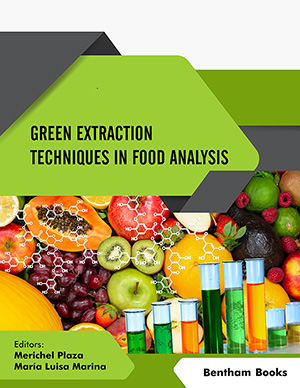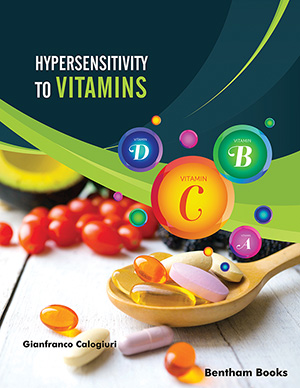Abstract
Background: Excessive adipose tissue, in the case of common obesity, has been associated with an endocrine-metabolic alteration that contributes to a manifestation of dyslipidemia. To identify mechanisms which are involved in disorders of lipid metabolism, several nutrients have been studied, especially zinc, which act by regulating transcription factors that are important for synthesis and oxidation of lipids and act as an anti-inflammatory and antioxidant nutrient. Thus, the study makes an assessment of the zinc status and biomarkers of cardiovascular risk in obese women.
Methods: A case-control study enrolling obese (body mass index (BMI) ≥35 kg/m²) and eutrophic (BMI 18.5-24.9 kg/m²) Brazilian women was conducted. Dietary zinc intake was assessed by the three-day food registry. Plasma, erythrocyte and urinary zinc concentrations were determined by inductively coupled plasma optical emission spectrometry. Cardiovascular risk was assessed by plasma concentrations of lipid fractions, and by anthropometric measures.
Results: Both groups showed a dietary zinc intake above the recommendations, with no statistical difference between them (p >0.05). Mean plasma and erythrocyte zinc concentrations were significantly reduced in obese women, compared to the control group (p <0.05). Urinary zinc excretion was significantly higher in obese women (p <0.05), who also had a significantly higher cardiovascular risk when compared to the control group (p <0.05). An inverse correlation between dietary zinc intake and waist-hip ratio was found in obese women.
Conclusion: Obese women presented zinc redistribution characterized by reduced concentrations in plasma and erythrocytes, dietary zinc intake above the recommended, and increased zinc excretion in the urine. This study shows dyshomeostasis of zinc in obesity, a possible role in adiposity control and, consequently, its protective role against cardiovascular risk, due to its influence on risk biomarkers, such as waist-hip ratio.
Keywords: Biomarkers, cardiovascular risk, dyslipidemias, obesity, women, zinc.
[http://dx.doi.org/10.1016/j.jacl.2015.12.003] [PMID: 26892119]
[http://dx.doi.org/10.1146/annurev-nutr-071715-050656] [PMID: 27146012]
[http://dx.doi.org/10.1089/met.2015.0140] [PMID: 27182718]
[http://dx.doi.org/10.1371/journal.pone.0125935] [PMID: 26011530]
[http://dx.doi.org/10.1152/ajpcell.00547.2009] [PMID: 20107043]
[http://dx.doi.org/10.1590/1806-9282.63.02.156]
[http://dx.doi.org/10.3390/nu5030928] [PMID: 23507795]
[http://dx.doi.org/10.1016/j.ihj.2014.03.005] [PMID: 24973832]
[http://dx.doi.org/10.1007/s11695-010-0170-7] [PMID: 20563664]
[PMID: 23675226]
[http://dx.doi.org/10.1007/s12011-013-9702-z] [PMID: 23695729]
[http://dx.doi.org/10.2298/VSP140417074T] [PMID: 26554112]
[http://dx.doi.org/10.1007/s00204-011-0775-1] [PMID: 22071549]
[http://dx.doi.org/10.3390/antiox6020024] [PMID: 28353636]
[http://dx.doi.org/10.1016/j.nut.2010.08.010] [PMID: 21035309]
[PMID: 24483962]
[http://dx.doi.org/10.2337/diab.34.2.179] [PMID: 3881305]
[http://dx.doi.org/10.3390/nu4070676] [PMID: 22852057]
[http://dx.doi.org/10.4322/nutrire.2012.008]
[http://dx.doi.org/10.1073/pnas.0502257102] [PMID: 15863613]
[http://dx.doi.org/10.1385/BTER:112:2:109] [PMID: 17028377]
[http://dx.doi.org/10.1016/j.jacc.2017.07.763] [PMID: 28911506]
[PMID: 7067090]
[PMID: 4337382]
[http://dx.doi.org/10.1016/j.amjhyper.2004.02.005] [PMID: 15110899]
[http://dx.doi.org/10.1590/S1415-790X2004000300004]
[http://dx.doi.org/10.1161/01.CIR.67.4.730] [PMID: 6825228]
[http://dx.doi.org/10.1007/s12011-016-0835-8] [PMID: 27587022]
[http://dx.doi.org/10.1007/BF02783726] [PMID: 1280980]
[http://dx.doi.org/10.1007/BF02790066] [PMID: 7888283]
[http://dx.doi.org/10.1381/096089206776327305] [PMID: 16608609]
[http://dx.doi.org/10.1007/s12011-013-9885-3] [PMID: 24402636]
[http://dx.doi.org/10.1385/BTER:100:2:137] [PMID: 15326363]
[http://dx.doi.org/10.1016/0002-9343(83)91205-6] [PMID: 6881179]
[http://dx.doi.org/10.1172/JCI112925] [PMID: 3549779]
[http://dx.doi.org/10.1385/BTER:114:1:127] [PMID: 17205995]
[http://dx.doi.org/10.1007/s12011-013-9718-4] [PMID: 23784733]
[http://dx.doi.org/10.1590/S0004-27302007000300013] [PMID: 17546244]
[http://dx.doi.org/10.1016/j.atherosclerosis.2009.11.038] [PMID: 20034629]
[http://dx.doi.org/10.3390/nu7064512] [PMID: 26056918]
[http://dx.doi.org/10.3390/nu7064296] [PMID: 26043030]
[http://dx.doi.org/10.2131/jts.36.681] [PMID: 22008544]
[http://dx.doi.org/10.1016/j.nut.2012.09.008] [PMID: 23274096]
[http://dx.doi.org/10.1016/j.jtemb.2013.09.001] [PMID: 24188897]
[http://dx.doi.org/10.1007/s12011-010-8940-6] [PMID: 21210247]























